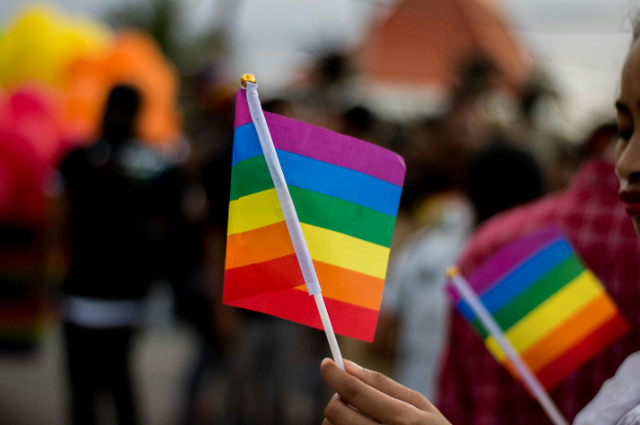
The Indian Constitution is grounded in the values of dignity, equality, fraternity, and individual freedom. These values are not ornamental. They are supposed to be enforceable principles that limit the State and protect the citizen. Yet, in October 2023, when queer citizens asked for the recognition of their family structures, the Supreme Court of India stepped back. It paused. It explained. It sympathized. It moralized. It performed a jurisprudential dance. And then it refused. The refusal was not based on a lack of constitutional theory. It was based on institutional comfort. In doing so, the Court failed queer India.
Marriage equality was not a radical litmus test. It was simply the next logical step after Navtej Singh Johar in 2018. In that landmark judgment, the Supreme Court did not merely decriminalize queer sex. It framed queer love within constitutional morality. It linked sexual orientation with dignity. It linked desire with privacy. It acknowledged that queer bodies were not criminal objects but autonomous subjects. After Navtej, the Constitution belonged to queer people as much as anyone else. Or so we were told.
Supriyo v. Union of India in 2023 demonstrated that this claim had limits. The Supreme Court held that it could not expand the Special Marriage Act to include same sex couples. They said that rewriting statutory text was beyond the judicial capacity. They argued that Parliament must legislate. This reasoning deliberately ignored the history of judicial craft in India. The Supreme Court has creatively read statutes in hundreds of previous cases. It has read gender neutral interpretations where required. It has extended constitutional meaning into fields Parliament did not anticipate. But when queer citizens asked for inclusion in marriage, the Court suddenly became allergic to interpretive evolution.
The majority opinion disguised political fear as constitutional restraint. It incorrectly presented marriage equality as a legislative luxury. In reality, marriage equality is a constitutional requirement. It flows directly from Articles 14, 15, 19, and 21. It is not conditional. Fundamental rights are not waiting room rights. They are not rights that activate only after Parliament approves. The Court knows this. Yet it refused to act as the guardian of fundamental rights.
The dissenting opinions of Justice Chandrachud and Justice Kaul exposed the internal inconsistency of the majority. Justice Chandrachud recognized that queer couples have the right to form intimate relationships and have them protected by law. He acknowledged that benefits and entitlements flow through marital status. Denying marriage equality, therefore, denies material equality. It is not just social exclusion. It is economic exclusion. It is legal precarity. Justice Kaul recognized that the queer population is a minority that has suffered historical discrimination. Denying marriage equality continues this discrimination.
The majority opinion tried to soften the blow. They created a committee proposal. They shifted the burden to the executive. They presented the denial as a transitional arrangement. But all of this cannot hide the fact that the Court left queer citizens in a legal vacuum. They left them in a space where love has no legal shield.
There is a constitutional culture in India that repeatedly asks queer people to wait. Wait for society to mature. Wait for Parliament to find courage. Wait for the political class to see queers as citizens rather than controversy. But fundamental rights do not wait. They exist regardless of popular morality.
The Court in NALSA in 2014 recognized transgender persons as a third gender and provided legal protection through judicial innovation. In Puttaswamy in 2017, the Court recognized that privacy is part of the core of fundamental rights, and within that core, sexual orientation is protected. In Navtej in 2018, the Court used constitutional morality to strike down a colonial provision. All these cases show that the Supreme Court had the doctrinal tools to recognize marriage equality. The refusal in Supriyo is not doctrinal. It is political.
This article is not claiming that Parliament has no role. Of course, Parliament has a role. But the interpretation of fundamental rights cannot be outsourced to Parliament. The Supreme Court’s reason for restraint in Supriyo was institutionally weak. It betrayed a poverty of courage.
The queer movement in India did not ask the Supreme Court to legislate. It asked the Court to apply constitutional principles consistently. If the right to love is protected, then the legal structure that enables love to survive, that enables families to exist, must also be protected. Marriage is not merely divine or cultural. It is a gateway to legal protections. Denial of marriage equality is a denial of equal citizenship.
The Supreme Court failed because it treated queer relationships as a footnote to mainstream family law. It failed because it acted as if queerness were a special case that required political consensus. The Constitution does not require consensus to protect minorities. It requires conviction.
Queer people in India are already forming families. They are already living together, raising children, sharing finances, facing violence, navigating illness, caring for each other, and dying together. The law simply refuses to acknowledge their reality. And the Court had the power to correct this. It did not. This failure is not an academic debate. It is a lived injury.
History will judge the Supriyo majority harshly. It will be remembered as a moment when the Supreme Court chose institutional safety over constitutional courage. And queer citizens will continue to pay the price of this failure every day.
References
- Navtej Singh Johar v Union of India, (2018) 10 SCC 1.
- Justice KS Puttaswamy v Union of India, (2017) 10 SCC 1.
- National Legal Services Authority v Union of India, (2014) 5 SCC 438.
- Supriyo v Union of India, 2023 INSC 917.
- Gautam Bhatia, Transformative Constitutionalism: The Indian Supreme Court and the Search for Meaning. Oxford University Press, 2019.
- Arvind Narrain, India’s Undeclared Emergency: Constitutionalism and the Politics of Resistance. Speaking Tiger, 2022.
- Indian Constitution, Articles 14, 15, 19, 21.
